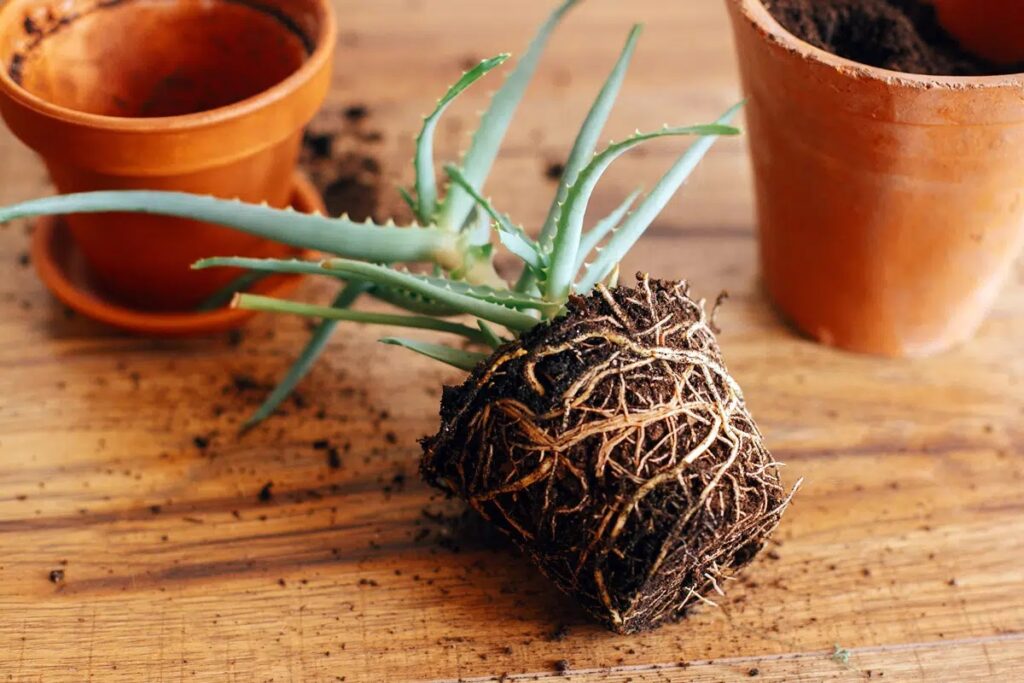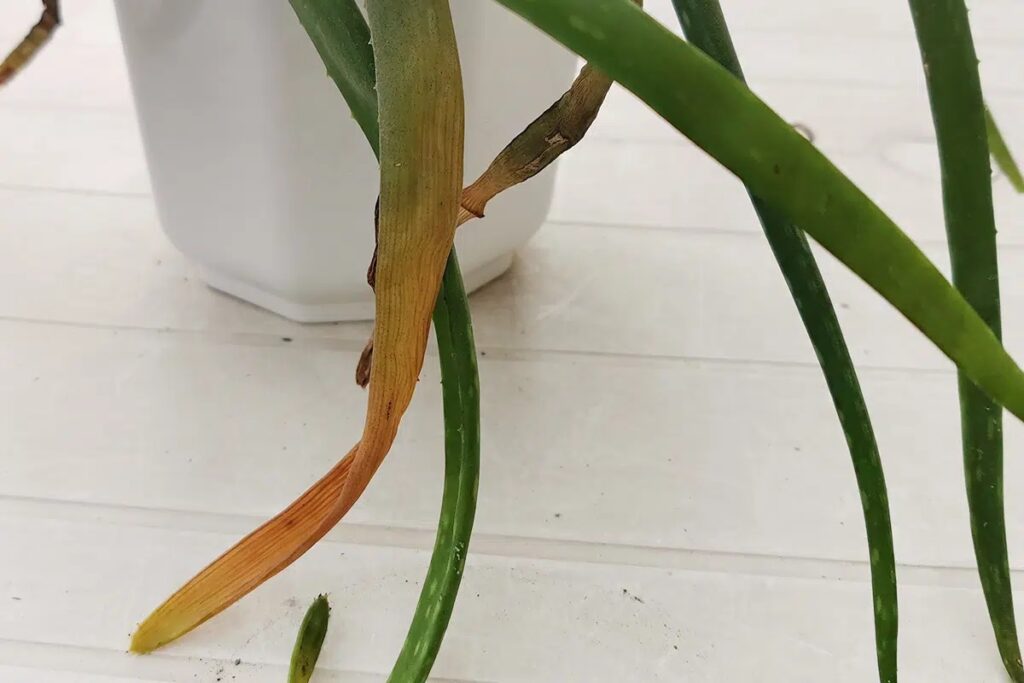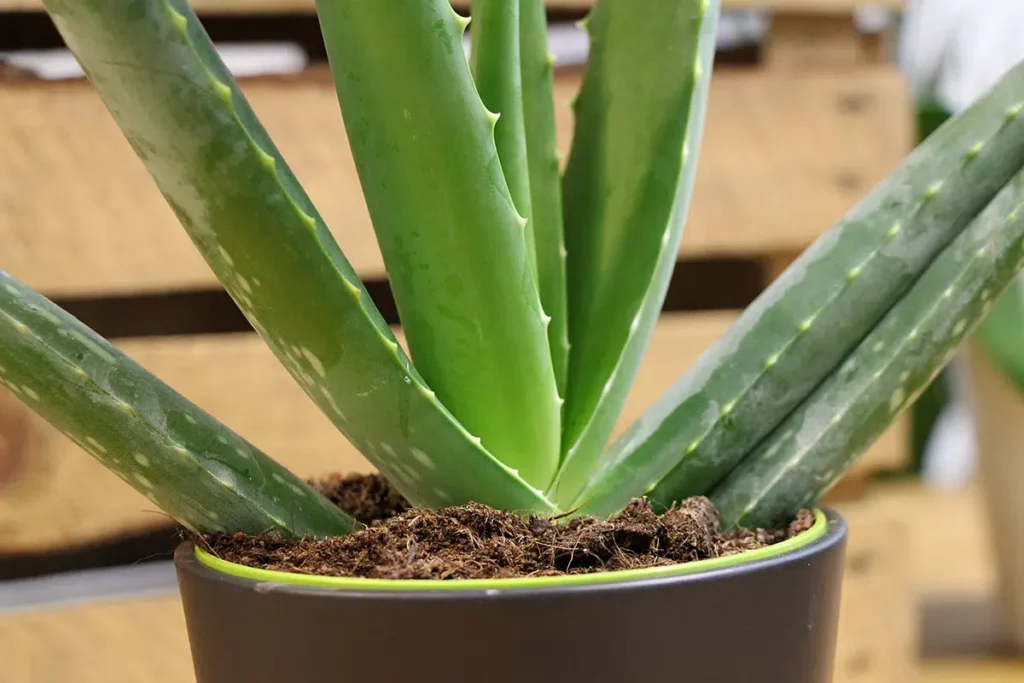Aloe vera leaves become soft and drooping: what to do?
Aloe vera is not only an attractive plant, but also very medicinal. Both reasons why it is often kept as a houseplant. However, it is quite sensitive to unfavorable conditions.
Contents
- 1 This is what a healthy aloe vera should look like
- 2 Overwatering as a cause
- 3 Repotting as an immediate measure
- 4 Prevent root rot
- 5 Proper watering the be-all and end-all
- 6 Soft leaves due to frost damage
- 7 Frequently asked questions
- 8 How to properly winterize an aloe vera?
- 9 Does the aloe tolerate direct sun?
- 10 What should you look for when buying?
- 11 Author
This is what a healthy aloe vera should look like
If the aloe vera feels well and is healthy, it has gray-green or blue-green leaves, the young are bright green. They are firm and plump with a smooth and shiny outer skin. In addition, they usually always grow upwards and do not droop. If the conditions are not suitable for the needs, it leads to stress, the plant suffers. This is first seen in its leaves. If they turn yellow, droop or become soft, mushy and start to rot, this may indicate too much moisture or root rot or frost damage. If the problem is caught early, chances are good that the plant will recover.
Overwatering as a cause
Aloe vera is one of the succulents that naturally get by with very little water. They can store water in their fleshy, thickened leaves and thus survive long periods of drought unscathed. If too much watering is then applied, overwatering and waterlogging quickly occur, which can spell the end for these plants. A permanently damp or wet substrate will cause the roots of the aloe to rot. Usually, rotting roots are not noticed until the leaves are already soft, glazed and drooping. To save them then, they should be placed in fresh soil as soon as possible.
Repotting as an immediate measure
First, carefully remove the plant from the pot. If it is too tight, knocking the bottom of the pot against the edge of a table can help loosen the root. Or, run a knife along the inside edge of the pot and then gently pull the plant out. Always move the pot and not the plant. For larger specimens, it is best to have a second person help.

- Check roots for rotting after potting out
- Remove rotten and damaged root parts completely
- Healthy roots are neither soft and mushy nor black
- The new pot about three times the size of the root ball
- Drain holes in the bottom of the pot
- As the bottom layer drainage of coarse gravel or expanded clay
- Cover the drainage with fleece
- Place some soil on top and center the aloe
- Fill up with soil and press down
- Water sparingly only after a few days
Prevent root rot
- Pot should not be too large
- Substrate would remain excessively moist for a long time
- Same effect as overwatering
- Repot every two years to aerate roots
- Do not use normal garden soil
- Turns to mud when wet in pot
- Special soil for succulents
- Special soil drains moisture better
- Or make your own mixture
- Of potting soil, coarse sand and gravel or pumice in equal parts
- Fine sand would clump and retain more water

Proper watering the be-all and end-all
The amount of watering should be adjusted to the season. Accordingly, aloe vera needs more water in the summer months than in autumn and winter, especially if it is cool. It should generally be watered as sparingly as possible. If it spends the summer outdoors, watering twice a week is usually sufficient. If it stands indoors, however, it needs water about every three to four weeks.
In the cold season it should hardly be watered, only when the soil is really dry. An exception are young Aloe Vera specimens, they can not yet store so much water in their leaves and must be watered more regularly. However, even they should not stand wet. Waterlogging should be avoided at all costs. In addition, be careful not to water from above, that is, over the leaves, but always directly on the substrate. The fleshy leaves must remain dry.
Soft leaves due to frost damage
Other reasons why leaves are soft and drooping may be possible frost damage. Aloe vera cannot tolerate frost because of its origins. In its natural habitats, it can survive long periods of drought because it can store water in its leaves. This is exactly what can be its undoing in local winters. Already at temperatures below five degrees it could get problems. It gets really tricky when it gets frost. The water stored in the leaves freezes, destroying the leaf tissue and causing it to die.

Immediate help
Depending on how long the plant was exposed to frost, how severe it was and how pronounced the damage is, there may still be a chance to save the aloe vera. However, this requires quick response.
- Place the aloe in a bright and warm place.
- Avoid direct sunlight
- Do not water for a few days, or even weeks if necessary
- Until affected leaves dry up
- Later remove the dry parts of the plant
- Preferably with a sharp knife
- As a precaution, also check the root
- If necessary, let it dry or cut it off
- If after some time new, healthy leaves grow back from the center, this is an indication that the aloe vera has recovered from the frost damage.
Frequently asked questions
How to properly winterize an aloe vera?
From an outside temperature of ten degrees, you should bring it indoors, if it has spent the summer outdoors. Here it should be placed in a cool and bright place with temperatures between 10 and 15 degrees. Fertilizing is not done at all and watering is done very sparingly about every four to six weeks.
Does the aloe tolerate direct sun?
This plant loves warm and sunny places, tolerates direct sunlight. However, you should avoid blazing sun during the midday hours. If the aloe stands too sunny, it can happen that the beautiful green color suffers and the leaves turn reddish-brown. Often the tips of the leaves also dry out.
What should you look for when buying?
These plants are often sold in relatively small pots and should be repotted immediately after purchase if possible. If the aloe is to be used for health or cosmetic purposes, it is important to look for good or organic quality. It should be about four to five years old, because only when it is old, all the active ingredients are contained in sufficient quantities.


